discoveryphase
productdiscovery
idea
ideavalidation
ideas
Idea Validation in Practice
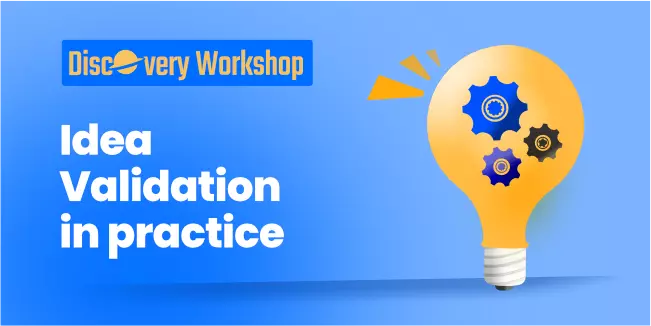
After organizing our idea, we should determine its market potential and what risks may arise during its implementation. We will learn this and much more thanks to the Idea Validation process.
This article is the next fourth stage of our Discovery Workshop series in which we present tips and guidelines that will help you get closer to your desired goal when creating a product.
What is Idea Validation?
The process of validating a concept through experimentation to make fast, informed, and de-risked judgments are known as idea validation.
Idea validation aims to put the concept through its paces in the real world before you create and offer the final product or service. It begins with a business idea and can eventually result in a paying customer. You can validate your idea during the workshop.
The reasons to validate your idea
New ideas contain unpredictable elements, and if even one of them fails, your plans may be ruined. Validation lowers the danger, speeds up the provision of a value-generating service in the market, and lowers expenses. Before investing a large amount of time and resources in developing something, it's essential to validate the concept to avoid creating and releasing a product or concept no one wants or is unwilling to pay for. We have created Discovery Workshop to help smooth, precisely, and fast validate your idea for a digital product.
Idea validation ensures that your idea has genuine demand; otherwise, it risks becoming "just another fantastic business idea." The concept must either be capable of addressing a genuine problem, carrying out its intended function or appealing to additional reasons - we talk about that in the previous article.
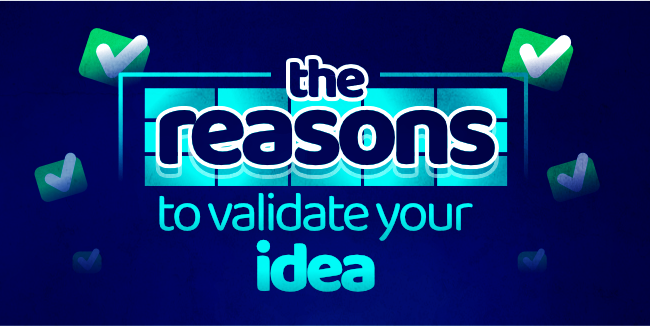
The most straightforward approach to validate your problem is usually the most effective. If you want to minimize the risks, it's a bad idea to make a remedy first and only then look for a possible issue. We had a few clients who, after the discovery workshop, decided not to create the product at the moment due to the poorly profiled idea, "something like this has already been created, and we have nothing to distinguish ourselves with," the product was not feasible.
The three main questions of Product Idea Validation
- Can it be built? Here's where you find out what you would need to build the product: expertise, equipment, capital, etc.
- Should it be built? Here you determine if there's a demand or need for the product, its chances in the market, and potential profitability.
- Will people be able to use it? It is where you choose the features of the product. You'll need to determine how complex it will be. You want to launch a product that people will find easy and convenient to use.
Factors that contribute to the success of your idea
Validation is a continuous process of improving your concept that does not end with the first assumption. Even if you have a genuine issue and a proven solution for it, other aspects of your idea may need to be validated as you develop it:
- To evaluate your idea's potential, assess its appeal to the relevant adopter categories. Adopters are sorted into "insertion points," or social systems that may be reached through various channels (such as email and messaging services). How attractive is your concept to these categories?
- Is it compatible with the requirements of potential adopters?
- Is there a significant gap between the firm's performance and its competitors? Relative advantage – Is it believed to outperform the competition? How is it seen to be superior? Is it, in fact, better?
- Is the concept simple to grasp, or do you require new information and abilities?
- Trialability – Is it possible to test your product before making a purchase?
- Observability – Is it possible for others to see the advantages of your product or service?
After a good validation process, you will get reasonable certainty about the product concept and see how we did it with our client.
How do validate ideas?
Testing assumptions is, in the end, all about validation. There are a variety of ways to validate an idea. It's critical first to test your most crucial hypothesis and not spend time on something that won't work.
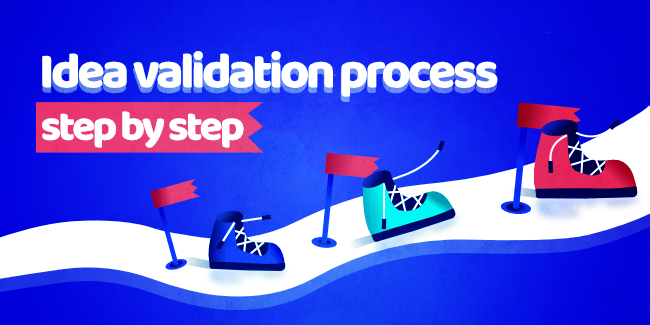
In an early stage, you should concentrate on validating your assumptions to ensure that the most crucial ones for your company are correct. For example, you might want to validate your target market and its potential so that you can know whether or not your concept is valuable and appealing to the market you've established.
Let's go through an idea validation process step-by-step:
1.Generate ideas
The first step is to come up with ideas. It can be done through brainstorming sessions, customer interviews, market research, or simply observing your own day-to-day life and identifying areas of improvement. Once you have a list of ideas, it's time to prioritize them.
2. Define your goal
Like any other idea management process, validation begins with defining your goals. You'll decide what you'd want to learn and which parts of the system you'll validate during this stage. Your aim might be one of the following:
Problem – Is your problem true/worth solving?
Solution – Is your product/offer going to solve the problem?
Features – How do the core features of your product work?
Business model – Is your business model viable and scalable?
Price – Is there enough demand to make your business model work with your set price? How does your pricing model work in practice?
These topics are widespread and significant, but they're simply illustrations. Your goal is to identify the essential assumption linked with your concept, so start with the most important one.
3.Define your persona
The first stage of your idea validation should begin with user research, in which you should create a persona. A persona is a fictitious person who symbolizes your target audience. You may develop as many personas as you like, although I recommend limiting yourself to 2 or 3. You won't have enough time to validate your idea on more than three user personas.
It's entirely up to you how seriously you take this part. You may include as much information as you like, including hobbies and personal information. Defining the problem for the persona and your central Unique Selling Point as a solution to it is, however, the one thing that will provide the most benefit.
4.Create a Value Proposition
A business concept may take a variety of paths at first. You can utilize the Value Proposition Canvas and the Lean Canvas to analyze and define value proposition possibilities and determine unique value proposition elements. You can have various target audiences, use cases, and business models. At this stage, picking the correct one might feel like a game of chance.
Filling out the value proposition canvas allows you to match your product features or services to your client's problems and needs. If you do it correctly, you'll be able to create a customized value proposition (VP) for each of your personas. With the Lean Canvas, you go a step further with your value propositions to outline the options each vice president might have. You can determine which target group deserves more of your time. At this point, all you should be concerned with is finding and targeting early adopters who you know best or can reach most efficiently.
5.Develop a hypothesis
After you've decided on a goal for idea validation, you're ready to create a hypothesis based on that aim. A helpful hypothesis is a testable assertion that includes a prediction.
The first thing to consider is the hypothesis's most essential assumption. That is the most likely to fail and have the most severe effects. What must be true for the concept to work?
6.If you have the opportunity, speak with your consumers in personal
The time to survey your users has come. Get out there and interact with your customers. If you've prepared a research plan, you should know who you want to speak with, what questions you'd want to ask, and how you intend to phrase them. Check the article about user research.
7.Conduct market research
In the first stage of market research, we must look at the competition in the market. The most straightforward approach to finding out what your rivals are up to is to utilize your user research data and see what solutions your customers are already using. Online communities, forums, and if you're still not convinced, a Google search can help you find possible rivals.
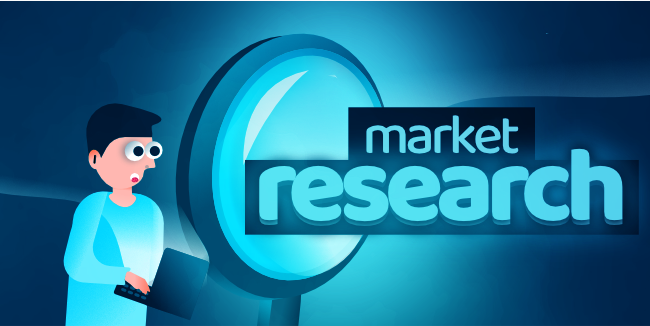
What should you compare? It is a highly personal decision based on your validation aim and how much time you have. I generally compare the following: the unique selling point – how is the competitor different? What features or services do they offer? How do they use these channels to contact their consumers to provide an exceptional customer experience?
Market validation is critical. Imagine you have an idea for an application for the paper industry. But what if this industry ceases to exist year on year?
You can check our article about how to conduct market research for mobile apps.
8.Test your value proposition
Once you've got a lot of data, it's time to start testing. However, before you begin, you should establish a validation objective.
A validation goal is what you use to evaluate whether your idea has been validated or debunked. Your objective can be anything that may be quantified: Getting 100 email subscribers. Build Landing Page and receive 10 pre-orders for your product
The goal is to get a number that belongs to a user action. Because visiting your website does not demand any significant action on the user's part, it does not qualify as a good KPI. Furthermore, the quantity you pick should be realistic. It should not be too easy or difficult to achieve.
Build a Prototype
Yes, building a prototype is a good idea, but you need a project description. And to have it, you need to conduct a feasibility analysis. We will talk more about this in the next section.
Creating a prototype is an excellent approach to obtaining feedback on your product or service before putting it out there. A prototype is a less-finished version of your product or service that you may test out new features and get consumer input with.
It doesn't have to be difficult or costly to create a prototype. You may use whatever resources you have on hand to make a rudimentary version of your product or service.
You'll need to contact people once you've built your prototype so that they can test it out. You might inquire about feedback from friends, family, and coworkers. Once you've gained input from others, you may modify your prototype based on their comments.
Creating a prototype is an excellent method to get feedback on your product or service before you spend too much time and money making it, like carrying out workshops. It can also assist you in validating your ideas, ensuring that people will use your product or service. So, if you're working on a new project, don't forget to make a prototype!
9.Feasibility Study
It's not enough to have a fantastic concept and construct a well-engineered product. Determining that your service is valuable, useable, and feasible is at least as essential. Suppose you have a concept for developing a product but don't know your ideal user's first obligation. In that case, I can assure you that you'll need to participate in discovery workshops to establish the foundations on which to create a new reality! It will be beneficial for your stakeholders to understand better the product's meaning, which will lead to more sound business and product objectives. At that point, we focus on the technical side of the project.
Customers do not purchase a product simply because they want to give money away. Customers will only buy and utilize a product if it fulfills their demands. You'll be able to identify their requirements with Discovery Workshops. Thanks to the feasibility study, we not only create a specific plan for building a product or prototype but also use our experience to help you maximize the technological advantage of your solution over the competition. Thanks to a detailed technical description with a combination of UX knowledge, your knowledge of the market, we can also validate the idea in terms of product feasibility and whether you need to write the entire solution from scratch or whether you can use the existing solutions (e.g., calendar) in your project, which will result in faster delivery and lower costs.
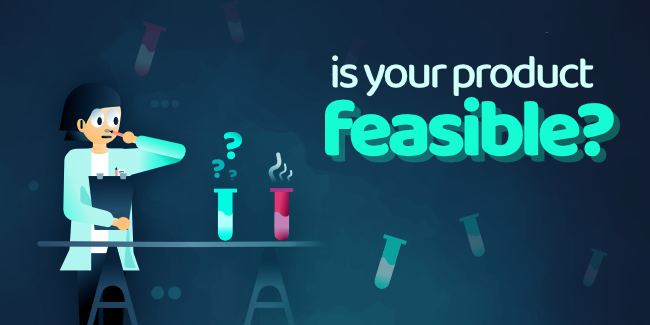
In the discovery phase of the project, you are defining important information about the product vision and purpose, goals and the primary aim of the product, target audience (user personas), processes, tools, technologies, user flows, user stories, user experience, building order, budget, and timeline. You need to describe the functionality and behavior of the product to be built and how it will be implemented. The discovery deliverable must describe the full user experience, not just the product requirements but also the user interaction and visual design.
Benefits:
- The main benefit is that the product team gets a specification that effectively and unambiguously describes the product they need to build.
- Reduced overall costs
- Increased production speed
- Minimized risk and issues
- A precise roadmap for your project
- Definition of your MVP/Prototype/PoC
- Timeline and budget
- Documentation and attachment to the agreement
- Plan for your potential investor.
Conclusion
The idea validation is crucial for the development of any digital product. It allows to reduce costs, increase production speed and minimize risks. Therefore, it is essential to have a clear and concise specification that describes all aspects of the product. The use of a discovery deliverable can help achieve this goal. If you have business ideas to create minimum viable products, you have to validate your idea first! You cannot build a solution or want to find a problem for your answer. After we validate our idea, the next step is to create product roadmap containing user flows and stories. This is the next stage of our Discovery Workshop study, about which you can read the article on our blog page. There you can learn more about this critical moment of creating our product.

This article is part of our Discovery Workshop series
What is Product Design? What is the Product Discovery and Product Discovery Process? Tips and Techniques for Effective Product Discovery Process Now readingIdea Validation in Practice Product Roadmap - how to write user stories and user flows? How to choose a tech stack for your project? How to create a project timeline? How to create a project budget? Functional Requirements Document for your Product What is a Prototype? Build your MVP (Minimum Viable Product) the right way - step by step guide by mDevelopers